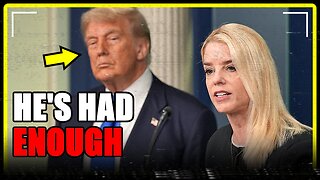Premium Only Content

Multilingual Education: Bridge to Unity or Babel of Privilege?
#MultilingualEducation #SocialDivideEducation #ReformLanguage #PoliticsSatiricalEssay #Edutainment #BilingualBias #CulturalCapital #FunnyButTrue #EducationWithEdge
Multilingual education promises the kind of utopia policy wonks dream about after one too many cups of artisanal coffee: classrooms where children bounce between languages like nimble mental acrobats, cultures mingle politely, and everyone leaves bilingual and blissfully unbothered. In practice, the dream meets budgets, bureaucracy, and that one administrator who insists “English first” like it’s a sacred mantra. When implemented thoughtfully, multilingual programs can validate students’ home languages, boost academic performance, and give marginalized kids a seat at the table that wasn’t bolted down. But like any well-intentioned policy executed by humans, success depends on resources, teacher training, and political will—things that are in notoriously short supply and long on rhetoric.
Of course, if you prefer miracles that happen overnight, there’s an equally plausible outcome: multilingual education as a clever new sorting hat. Schools with robust bilingual programs sometimes become prestige enclaves, attracting middle-class families who treat language offerings as another box on their private-school-comparison checklist. Meanwhile, underfunded schools cling to half-baked “language support” that translates to little more than a bilingual aide and textbooks that smell faintly of neglect. Instead of bridging gaps, this creates a two-tier landscape: multilingual education for the upwardly mobile, remedial language band-aids for everyone else.
Then there’s identity, the emotional swiss army knife of education policy. When a student’s home language is honored in school, it validates their family history and strengthens self-esteem, surprising results for adults who thought grammar drills were the only path to confidence. But flip the script and force assimilation under the guise of “social cohesion,” and language becomes a tool of erasure. In such cases, multilingual education is less about linguistic empowerment and more about managing visibility: letting some languages exist as museum artifacts while promoting a single “neutral” tongue as the only ticket to success. That’s not integration; it’s polite cultural amnesia.
Policy design determines whether multilingual education is bridge or moat. Effective programs invest in community teachers, create pathways for academic advancement in multiple languages, and resist the temptation to treat bilingualism as a novelty elective. Poorly designed programs cut corners, isolate language learners, and signal that certain tongues are expendable. In short, multilingual education does not magically produce equality; it magnifies whatever equity or inequality is already present. It’s like handing someone a megaphone: if they’re standing on a platform, everyone hears them; if they’re stuck in a basement, the megaphone only amplifies the echo.
So what’s the verdict? Multilingual education is an instrument, capable of building bridges if we invest in it like we mean it, or digging trenches if we treat it as window dressing. If society wants language policy to unite rather than segregate, it must pair ambition with concrete commitments: funding, culturally responsive curricula, and career paths that reward multilingual teachers. Otherwise, we’ll keep having earnest debates about inclusion while quietly preserving the same old divides, now translated into three languages and wrapped in well-intentioned jargon.
-
 13:46
13:46
Nikko Ortiz
18 hours agoYour Humor Might Be Broken...
41.9K5 -
 9:26
9:26
MattMorseTV
1 day ago $48.20 earnedPam Bondi is in HOT WATER.
57.9K217 -
 16:38
16:38
MetatronGaming
15 hours agoAnno 117 Pax Romana looks INCREDIBLE
85.7K11 -
 3:25:55
3:25:55
DillyDillerson
4 hours agoCAN'T SLEEP | Solo Raids | Trying to level up my workshop | Tips and help are welcome!
12.2K1 -
 LIVE
LIVE
DynastyXL
4 hours ago🔴 LIVE NOW – ARC RAIDING - BADLY! - NEW RUMBLE WALLET - THOUGHTS?
91 watching -
 2:20:13
2:20:13
Side Scrollers Podcast
22 hours agoVoice Actor VIRTUE SIGNAL at Award Show + Craig’s HORRIBLE Take + More | Side Scrollers
77.2K21 -
 2:11:03
2:11:03
EXPBLESS
2 hours agoShowcasing New Game | (Where Winds Meet) #RumblePremium
5.68K -
 LIVE
LIVE
Boxin
3 hours agolets BEAT! Kingdom Hearts!
42 watching -
 18:49
18:49
GritsGG
18 hours agoI Was Given a Warzone Sniper Challenge! Here is What Happened!
24.4K2 -
 19:02
19:02
The Pascal Show
1 day ago $8.29 earnedNOT SURPRISED! Pam Bondi Is Lying To Us Again About Releasing The Epstein Files
31.2K23